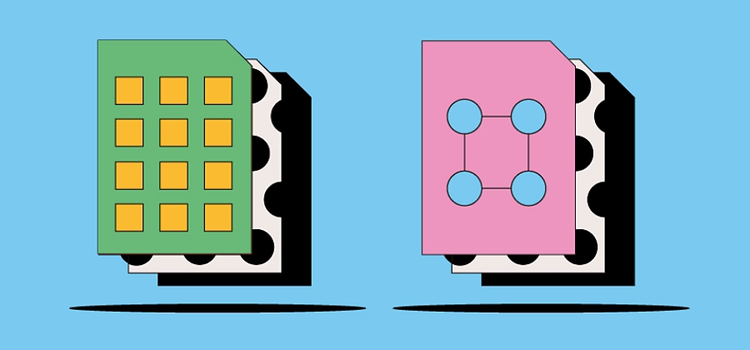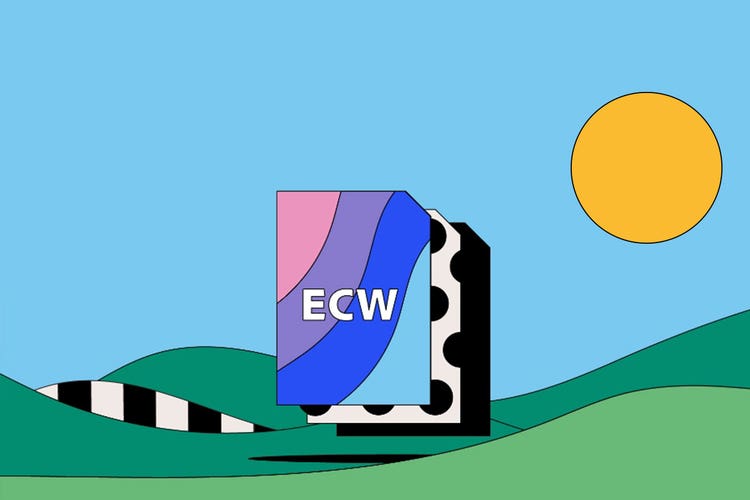PHOTOGRAPHY
ECW files.
ECW files capture incredibly detailed images on a massive scale. A favorite of aerial photographers and mappers, this file format retains enormous quality and detail, even under higher levels of compression. Find out more about their origins and uses — and how to create your own.

https://main--cc--adobecom.hlx.page/cc-shared/fragments/seo-articles/get-started-notification-blade
What is an ECW file?
ECW files are capable of great compression levels, achieving ratios of up to 1:100. They’re ideal for large scale photography shot from great distances — for example, from the sky with aerial photography or satellite photography from space. This makes them a favorite with meteorologists and oceanographers.
ECW stands for Enhanced Compression Wavelet. You can compress and decompress the files with only small amounts of RAM, and the processes are so fast that you can move and handle ECWs like standard files.
With ECWs, you can display enormous images — many gigabytes in size — without pixelation. Even better, ECWs don’t require as much computing power as you might expect.
History of the ECW file.
Australian software developers, Earth Resource (ER) Mapping Ltd., created the ECW file.
ER Mapping’s original concept began with terabyte-sized environmental images. A mathematical breakthrough provided a means for transforming and browsing the images. The developers refined this process, improving image quality and speed of use.
As the files became more popular, more people used them on smaller, lighter computers. Another later adaptation made it possible to decompress portions of images without decompressing the entire file.
How to use an ECW file.
This file format has several uses and is most common in geoscience, satellite mapping, and environmental industries.
Aerial photography.
You can use ECW files to capture aerial photographs, including landscape photos from mountaintops and skyscrapers’ upper floors, as well as overhead views taken by low-flying drones and high-flying airplanes.
Satellite imaging.
ECW files can capture extremely large subjects from space, ranging from shorelines and city subdivisions to the full length of rivers, entire states, and more.
Geo sciences.
ECW files also capture GeoRadar images in the solar system, geospatial data taken from 3D spaces, and geolocation mapping, enabling scientists to observe how vast and complex forms change size, shape, and location.
Pros and cons of ECW files.
Below are some advantages and disadvantages of using ECW files.
Advantages of ECW files.
- Size. For images of a terabyte or more, ECW files are ideal. There’s no limitation to image size.
- High performance. ECW's compression and decompression processes have improved over time. You can now achieve compression ratios of up to 1:100.
- Storage. You can store massive amounts of data in ECW files, but it’s possible to reduce their size by more than 90% — meaning you can keep entire image sets or store image files on smaller devices.
Disadvantages of ECW files.
- Look, but don’t touch. ECW files are primarily for moving, storing, and viewing images. They’re not designed for editing or manipulation. While possible, ECW files largely remain a viewing tool.
- Size. Though ECW files are greatly compressed, they’re still large. And when they change size, they can create gigabytes of temporary files — capable of crashing some low-power computers.
- Compression and decompression. If you’re not just viewing the files, but actively changing their size, their core compression and decompression processes can be complex. Even experienced hands struggle on both sides.
How to open an ECW file.
A range of software programs can open ECW files on a Windows computer or Mac. First, you’ll need to download a compatible program.
- Start by navigating to your saved file folder.
- Right-click on its name.
- Click Choose Default Program, followed by Browse.
- Select the compatible program you want to launch the file with.
How to create and edit an ECW file.
Creating and editing ECW files requires specialized software like the ER Mapper Image Compressor. ERDAS IMAGINE software, based on the original design, can also edit and extract information from your images.
It’s good to note that if you’re going to create and edit ECW files, make sure your computer has plenty of available memory space.
ECW files: frequently asked questions.
Aside from ER Mapper Image Compressor and ERDAS IMAGINE, you can also open ECW files with the following programs:
- Canvas X
- Falcon View
- Irfan View
- TatukGIS Viewer
- XnView
